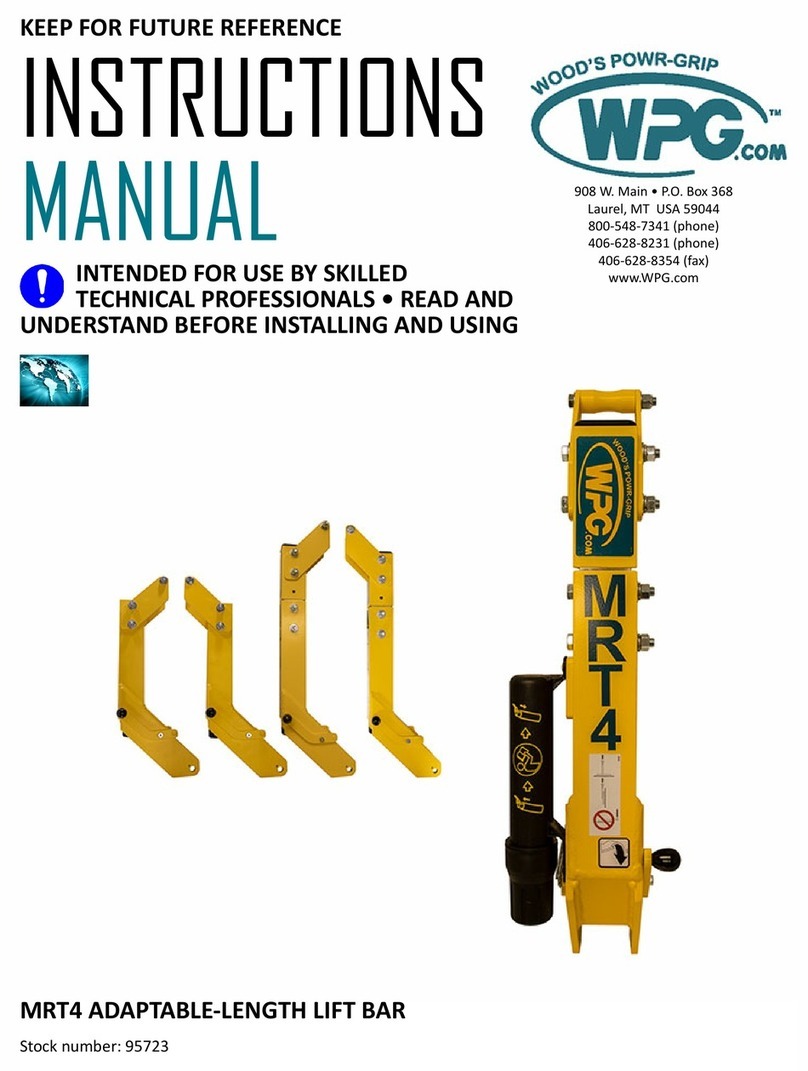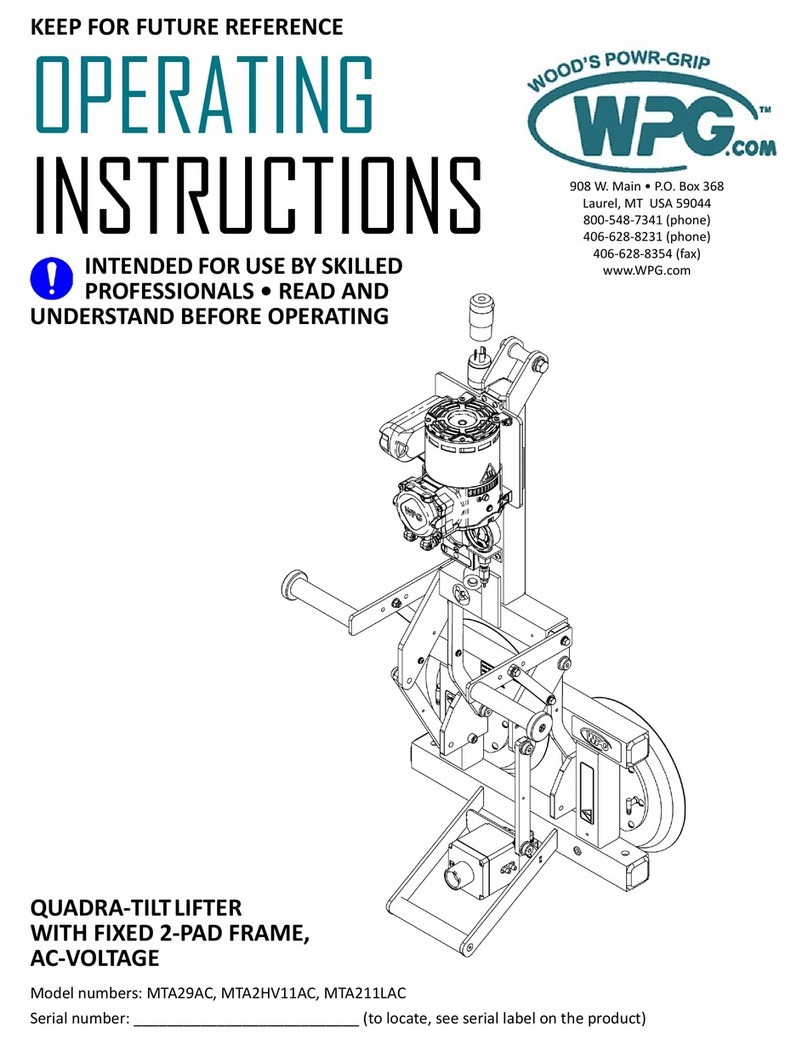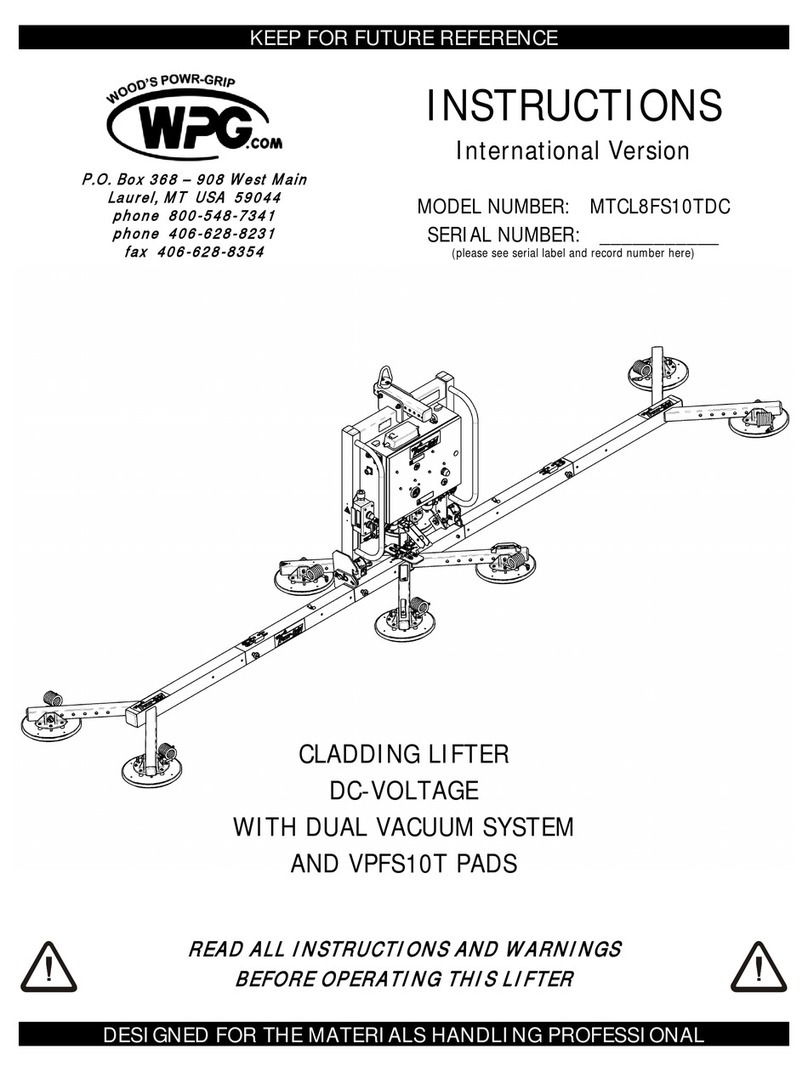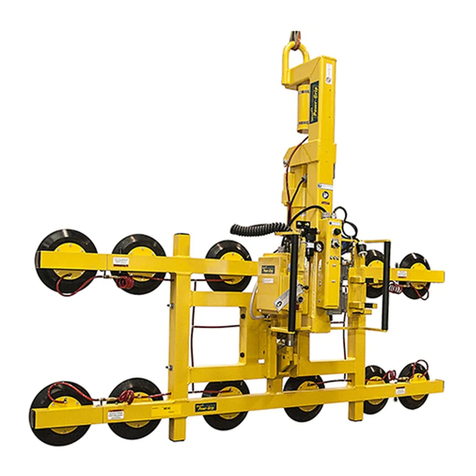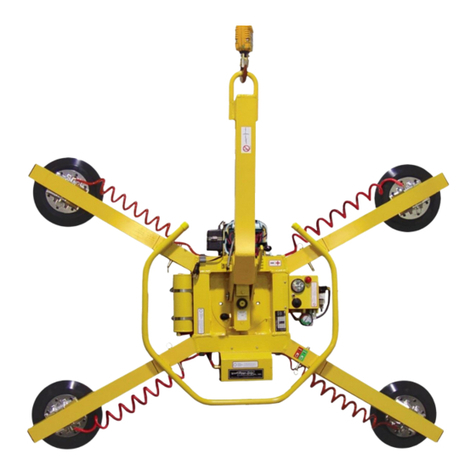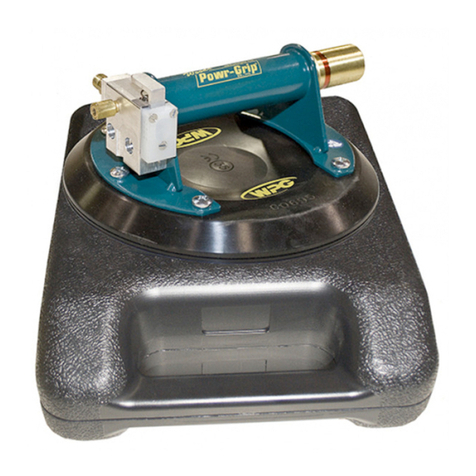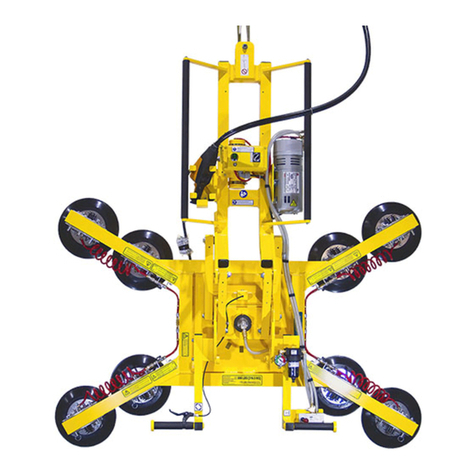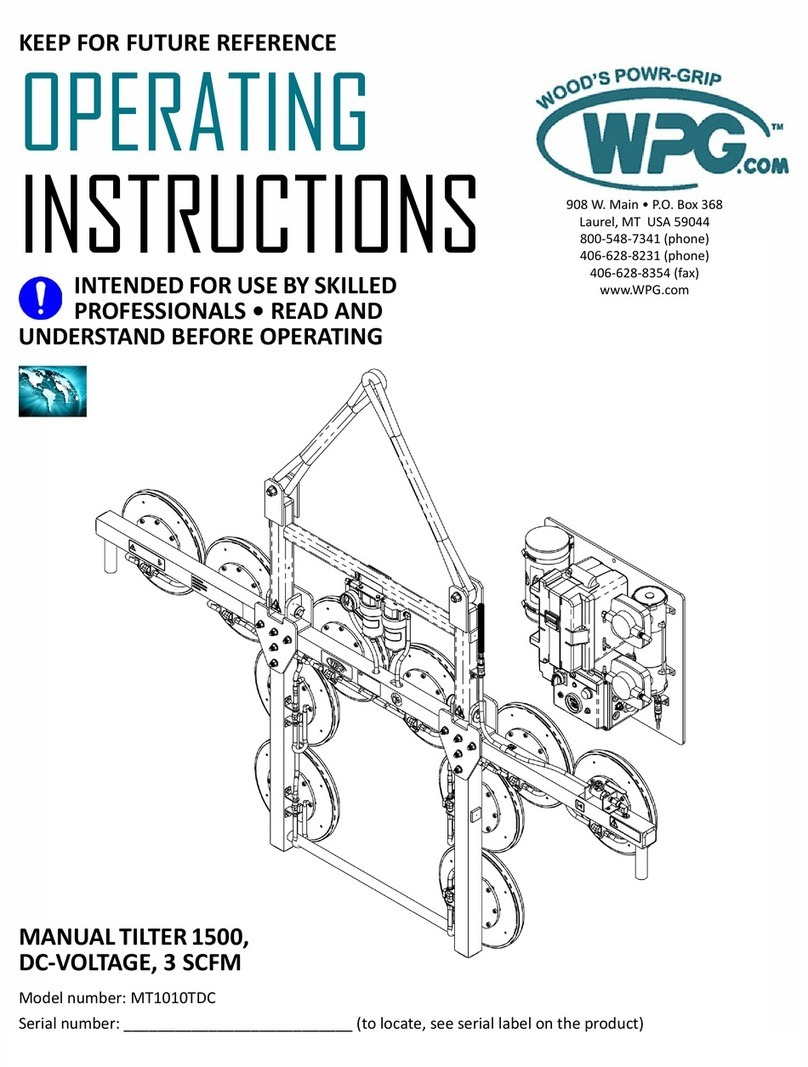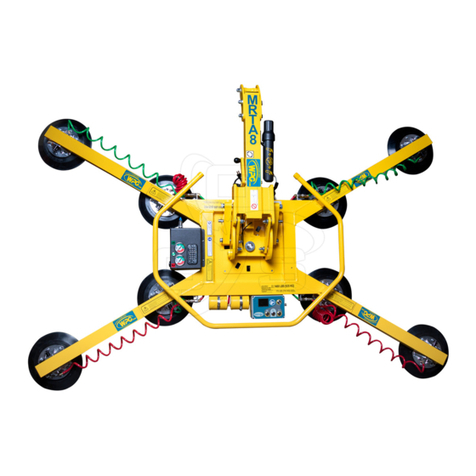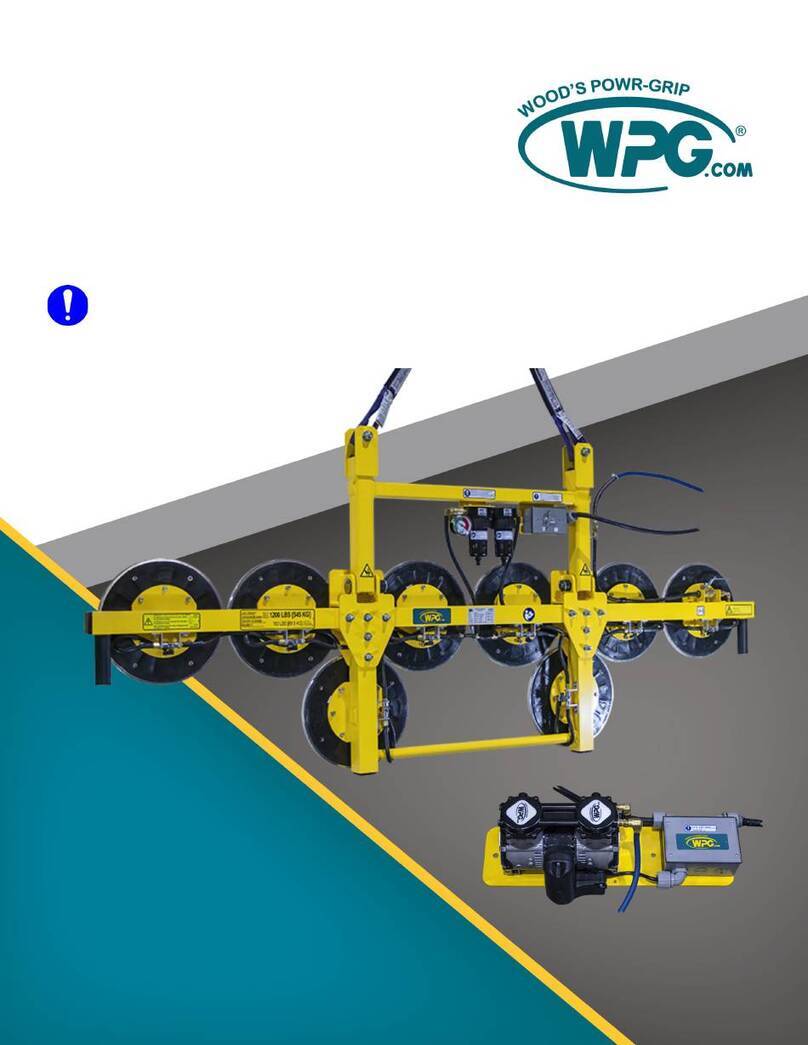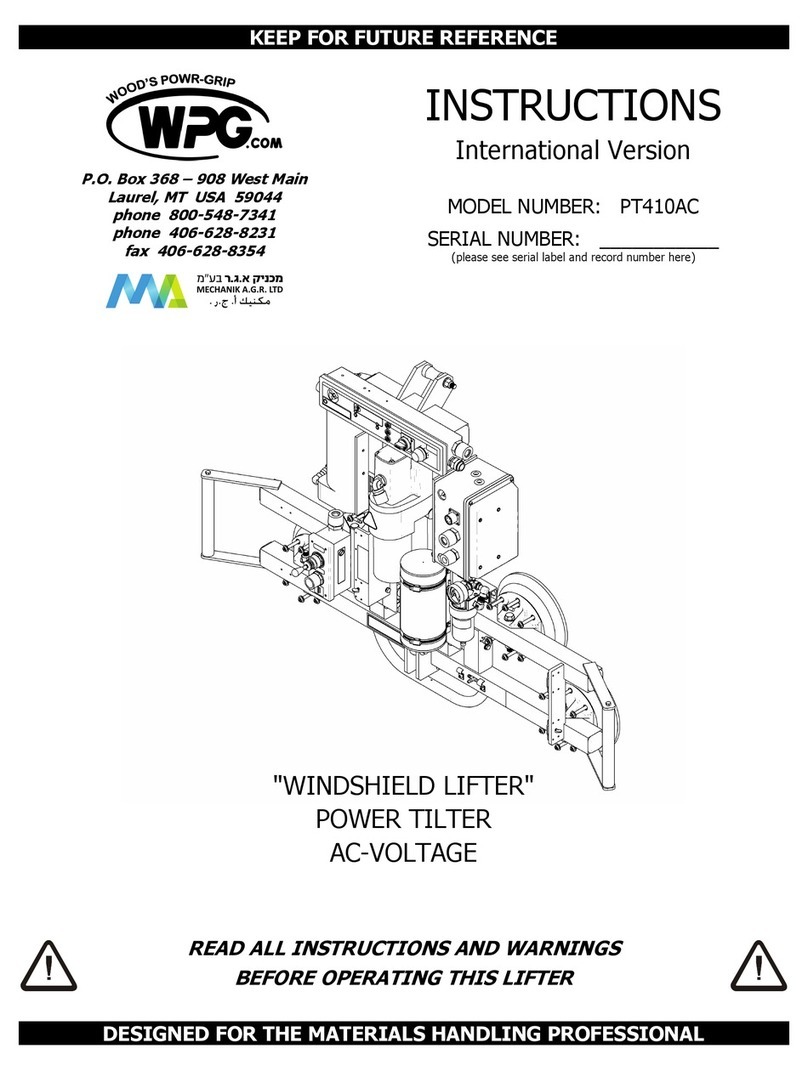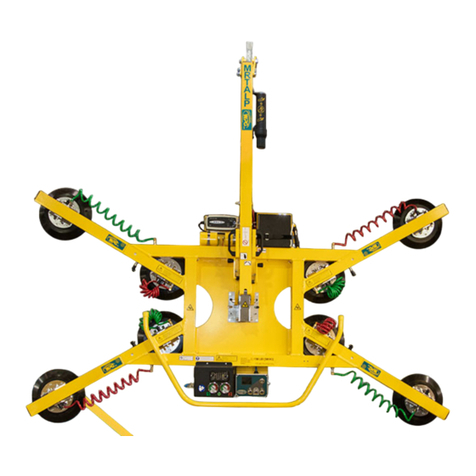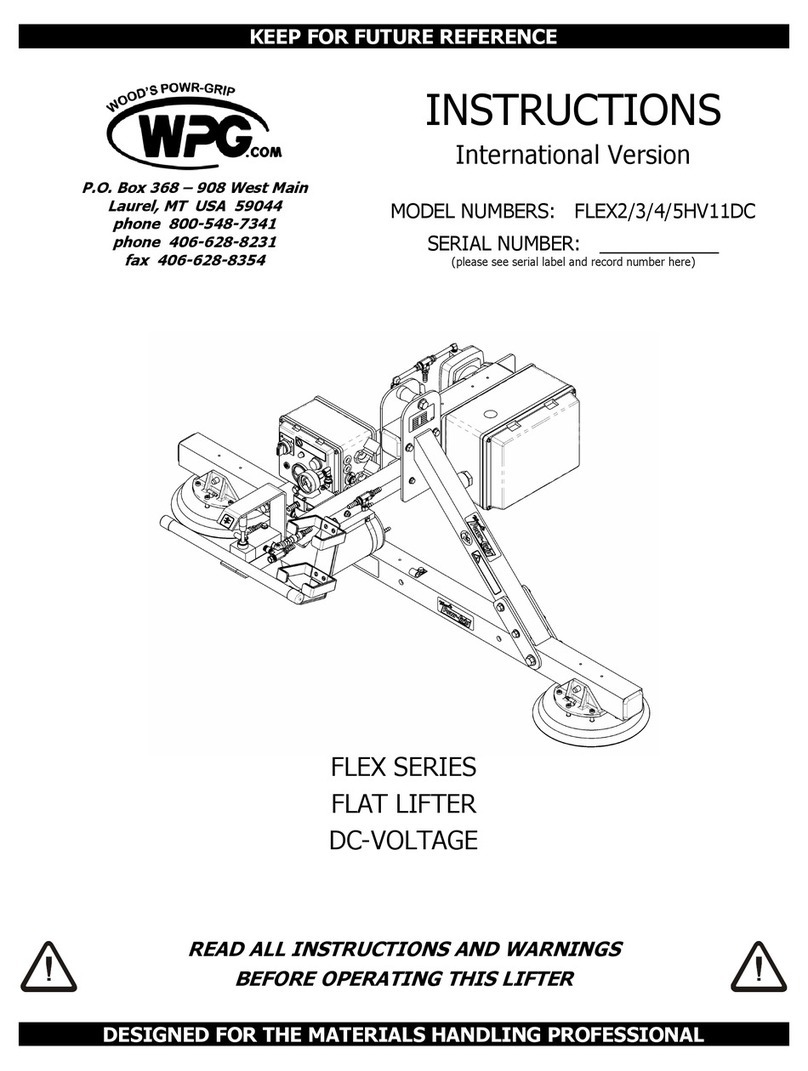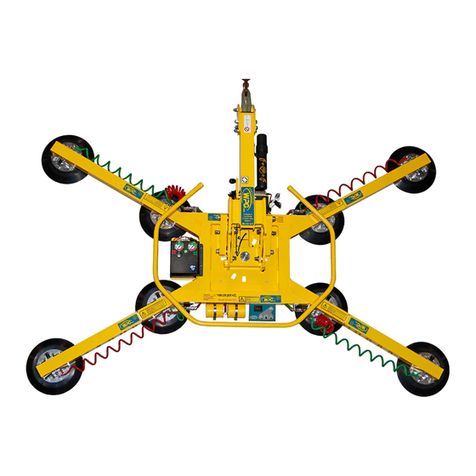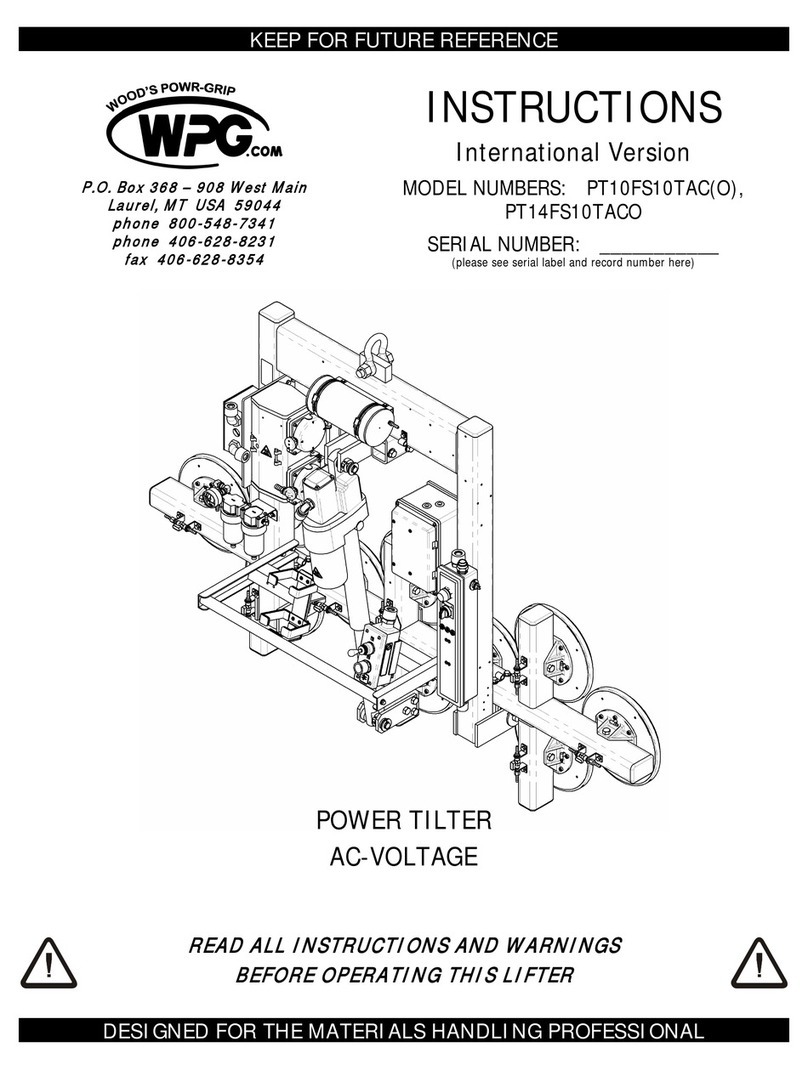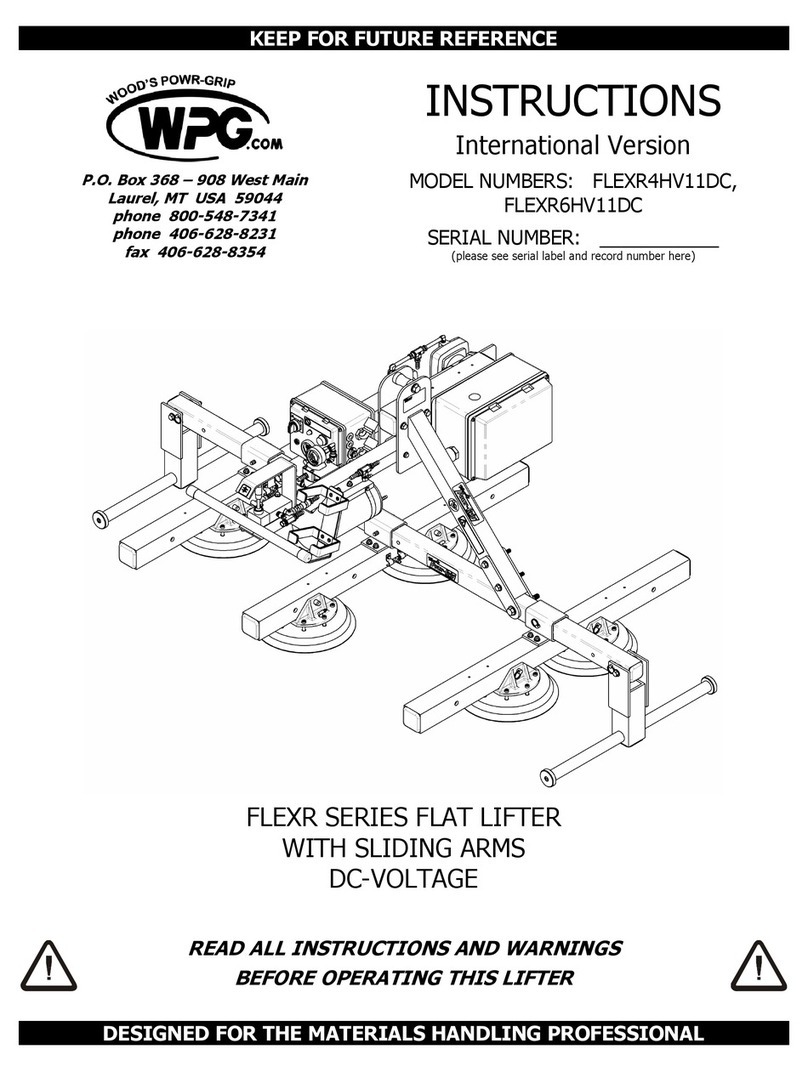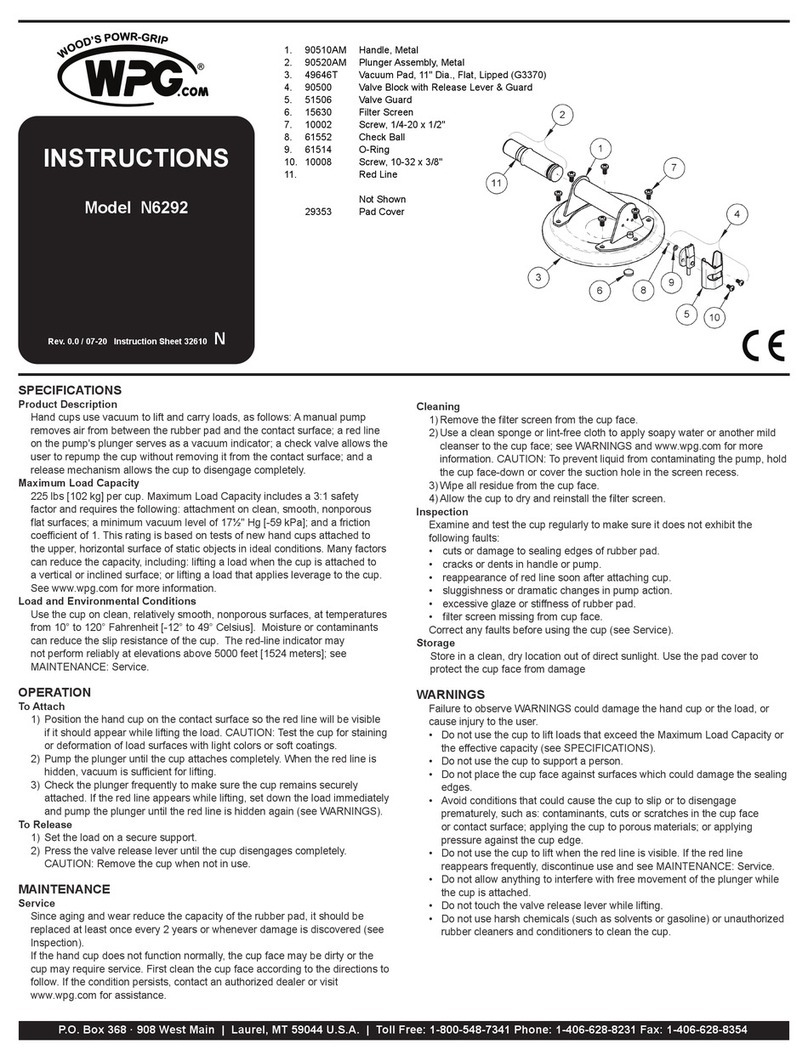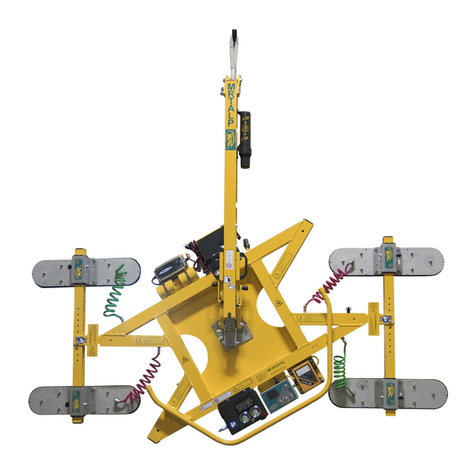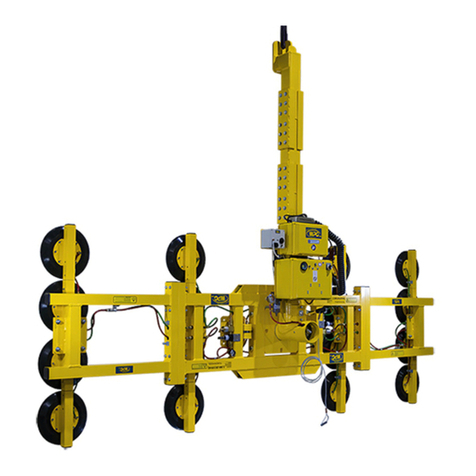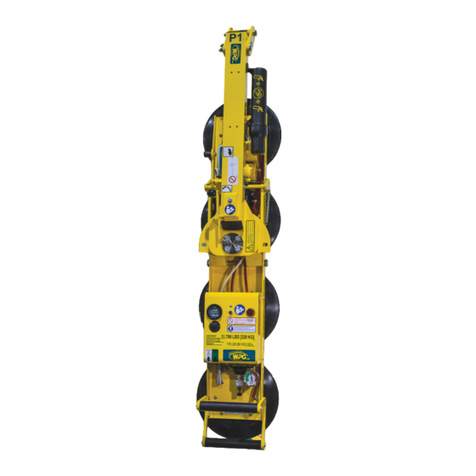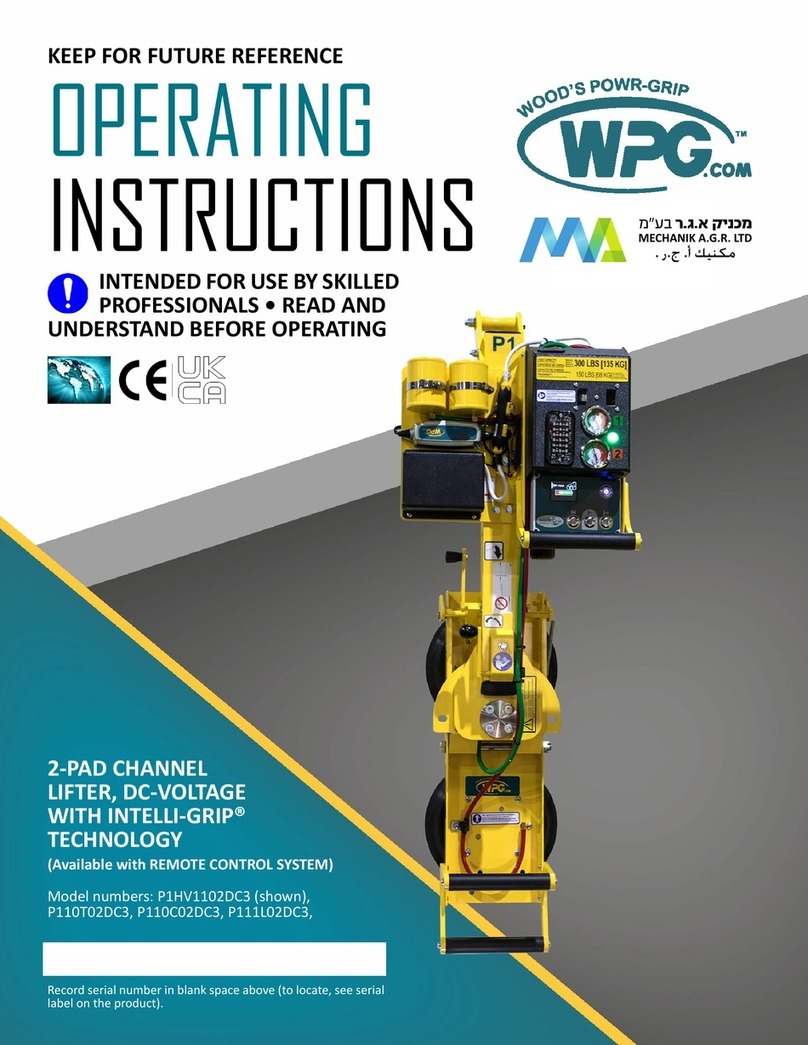
Rev 4.0/7-20 MRT4-DC3: #35068AUS1
SPECIFICATIONS .....................................................................................3
SAFETY...................................................................................................5
OPERATING FEATURES............................................................................6
ASSEMBLY..............................................................................................7
TOCHANGE THE PAD FRAME CONFIGURATION ..................................................9
Installing/Removing Extension Arms and Repositioning Vacuum Pads ............................10
Using Secondary Rotation Stops .......................................................................................11
INTENDED USE .....................................................................................12
LOAD CHARACTERISTICS...............................................................................12
OPERATING ENVIRONMENT..........................................................................13
DISPOSAL OF THE LIFTER .............................................................................13
OPERATION..........................................................................................14
BEFORE USING THE LIFTER...........................................................................14
Taking Safety Precautions .................................................................................................14
Selecting a Screen Language.............................................................................................14
Performing Inspections and Tests .....................................................................................15
Checking the 12-Volt Battery ............................................................................................15
TOATTACH THE PADS TO ALOAD ..................................................................16
Positioning the Lifter on the Load.....................................................................................16
Powering up the Lifter ......................................................................................................17
Sealing the Pads on the Load............................................................................................17
Reading the Vacuum Gauges ............................................................................................18
Interpreting the Lift Light..................................................................................................19
Watching Vacuum Indicators ............................................................................................19
Controlling the Lifter and Load .........................................................................................20
In Case of a Power Failure.................................................................................................20
TOROTATE THE LOAD .................................................................................21
TOTILT THE LOAD ......................................................................................22
TORELEASE THE PADS FROM THE LOAD .........................................................24
AFTER USING THE LIFTER.............................................................................25
Storing the Lifter ...............................................................................................................25
INSPECTIONS AND TESTS......................................................................27
INSPECTION SCHEDULE ................................................................................27
TABLE OF CONTENTS












